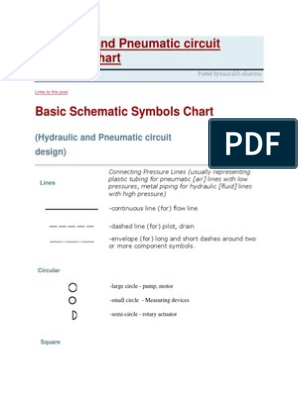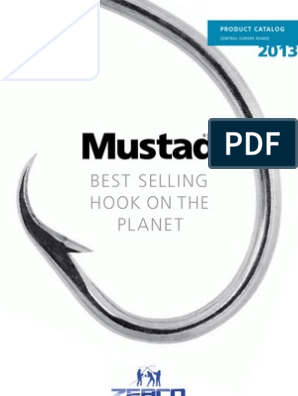Hydraulic and
Pneumatic Systems
Dr. Mohamed Mostafa Abdelaziem
� HYDRAULIC VALVES
• Hydraulic systems require control valves to direct and regulate the flow
of fluid to various actuators.
• Between the power input device (pump) and the power output device
(actuators), we usually find one or more valves that provide various
control functions for the hydraulic system.
• These valves fall into three groups:
� HYDRAULIC VALVES
➢ Graphical Symbols
• Control actions are commonly too complex to be represented by sketches which show how a
valve is constructed. For simplicity, a set of graphic symbols are used. Simple valve symbols are
used to describe control actions. These show component function without showing the detailed
construction of each device.
• A valve is represented by a square for each of its switching positions. Valve positions can be
represented by letters a, b, c and so on, while 0 is being used for a central neutral position. Ports
of a valve are shown on the outside of boxes in normal initial position.
� HYDRAULIC VALVES
➢ Valve Symbols
• Arrow-headed lines represent direction of flow. In figure 5.6a, fluid is delivered from port P to
port A and returned from port B to port T when the valve is in its normal position a. In the case
b, flow is reversed. Shut off positions are represented by T, as shown by the central position of
the valve in figure 5.6b, and internal flow paths can be represented as shown in figure 5.6c.
� HYDRAULIC VALVES
➢ Valve Actuation Symbols
• The figure shows symbols for the various ways in which valves can be operated. Figure 5.8a
represents a 4/2 valve operated by a pushbutton. With the pushbutton depressed the ram extends.
With the pushbutton released, the spring pushes the valve to position a and the ram retracts.
Actuation symbols can be combined. Figure 5.8b represents a solenoid-operated 4/3 valve, with
spring return to center.
� HYDRAULIC VALVES
➢ Valve Actuation Symbols
• Infinite position valve symbols are shown in
Figure 5.9. A basic valve is represented by a single
square as shown in Figure 5.9a, with the valve
being shown in a normal or non-operated position.
Control is shown by normal actuation symbols. In
figure 5.8b, for example, the spring pushes the
valve right decreasing flow, and pilot pressure
pushes the valve left increasing flow. This
represents a pressure relief valve which would be
connected into a hydraulic system as shown in
figure 5.8c.
� HYDRAULIC VALVES
➢ Types of Control Valves
• Hydraulic control valves are used to regulate the pressure, flow rate, and the direction of fluids. Several
valves are classified by function and are listed in table 5.1.
• Pressure control valves are used to limit the maximum pressure, reduce the pressure, or sequence hydraulic
operations. They are also used to unload circuits at low pressure to reduce power consumption and to
provide switch signals at specified pressure.
• Flow control valves are employed to vary the fluid flow rate using restrictions in fluid passages that may be
fixed or variable with flow or pressure compensation.
• Directional control valves are used to check, divert, shuttle or proportion the flow. They are also used to
manage the flow by other means in one, two, three, four or more ways. Valves may be direct acing or pilot
operated from a remote location. The acting force to operate the valve can be supplied manually by a
human operator, directly by the fluid under pressure or from a pilot circuit or by electrical devices such as
solenoids or servo-electric drives.
� HYDRAULIC VALVES
➢ Types of Control Valves
� HYDRAULIC VALVES
➢ Pressure Control Valves
➢ Direct Operated Relief Valves
• Relief valves are the most common valves of the pressure control. They are located near the pump
outlet to protect the pump and provide oil bypass to limit the maximum operating pressure and
therefore, avoids pressure overloads. Hydraulic systems always use positive fixed displacement
pumps and therefore, they must have pressure relief valves. Figure 5.10 shows the operation of a
direct acting spring type relief valve. Spring pressure acts to keep the plug element against the seat
and the valve in the closed position. System pressure at the inlet port acts against the exposed area
of the plug.
� HYDRAULIC VALVES
➢ Pressure Control Valves
➢ Direct Operated Relief Valves
• When the force of the fluid becomes greater than the opposing resistance offered by the spring, the
plug is forced from its seat, the valve opens and the fluid is directed to the reservoir at low pressure
through the outlet port. The pressure at which the valve opens is called the cracking pressure.
Adjustment within the pressure range of the valve is made with the adjustment screw which acts to
compress the spring of the valve. Direct acting relief valves are usually available in only relatively
small sizes because it is difficult to design a strong enough spring to keep the poppet closed at high
pressure and high flow.
� HYDRAULIC VALVES
➢ Pressure Control Valves
➢ Pilot Operated Relief Valves
• Pilot operated relief valves are designed to
accommodate higher pressures with higher
flows rates. The valve is built in two stages. The
first stage of the pilot relief valve includes the
main spool which is normally closed and kept in
position by a non-adjustable spring. The pilot
stage is located in the upper valve body and
contains a pressure-limiting poppet, which is
held against a seat by an adjustable spring. The
lower body contains the port connections. The
balanced piston in the lower part of the body
accomplishes diversion of the full pump flow.
� HYDRAULIC VALVES
➢ Pressure Control Valves
➢ Pilot Operated Relief Valves
• In normal operation, the balanced piston is in a
condition of hydraulic balance. Pressure at the
inlet port acts on both sides of the piston,
through an orifice, that is drilled through the
large land. For pressures less than the valve
setting, the piston is held on its seat by a light
spring. As soon as the pressure reaches the
setting of the adjustable spring, the poppet is
forced off its seat. This limits the pressure in the
upper chamber. The restricted flow through the
orifice into the upper chamber results in an
increase in pressure in the lower chamber. This
causes an imbalance in the hydraulic forces,
which tends to raise the piston off its seat.
� HYDRAULIC VALVES
➢ Pressure Control Valves
➢ Direct Vs Pilot Operated Relief Valves
� HYDRAULIC VALVES
➢ Pressure Control Valves
➢ Pressure Reducing Valves
• In some hydraulic systems, two or
more pressures are required in
different parts of a circuit, but only
one pump is used. The pressure
reducing valves control output fluid
pressure. Reducing valves are used to
keep the pressure in output parts of
the circuit lower than the pressure in
the main circuit. As a consequence,
the flow control element would open
when the pressure in the secondary
circuit dropped below the desired
value.
� HYDRAULIC VALVES
➢ Pressure Control Valves
➢ Pressure Reducing Valves
• The pressure reducing valve is a
normally open pressure control valve
used to limit pressure in one or more
legs of a hydraulic circuit. Reduced
pressure results in a reduced force
being generated. A pressure reducing
valve is the only pressure control
valve that is normally open. A
normally open pressure control valve
has primary and secondary passages
connected. Pressure at the bottom of
the spool is sensed from the pilot line
which is connected to the secondary
port.































































































